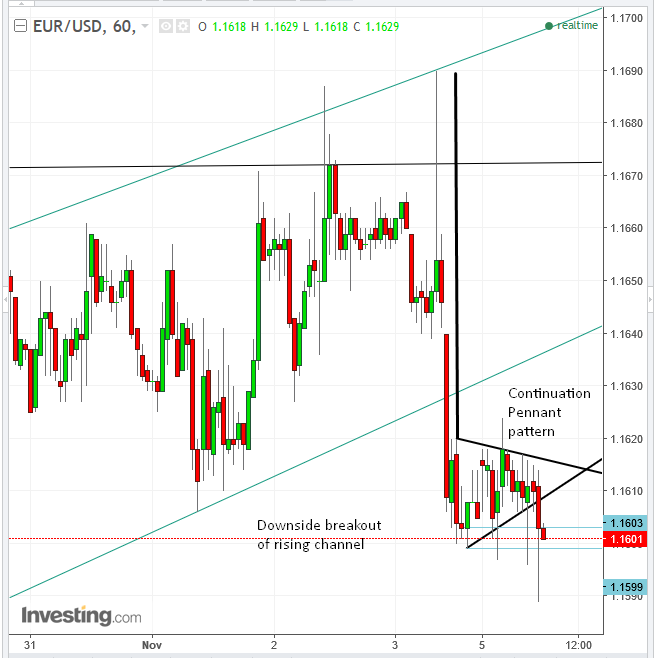by Pinchas Cohen
We have been bearish on the euro since it completed an H&S top on September 28 at 1.1767, which took it out of its rising channel since April. Subsequently, the single currency headed lower, through November 1, with a price of 1.1644.
As of the time of this writing, one euro would fetch $1.1593 and we believe it's about to fall hard...toward 1.1500, as early as today.
What euro bulls hoped would be bullish for the common currency turned out to be bearish, when last week ECB President Mario Draghi underscored that interest rates are probably going to be at near-zero levels for the foreseeable future. Meanwhile, it’s considered a forgone conclusion that the Fed is raising rates again in December. Add the potential for US tax reform into the mix and the dollar looks pretty good.
We have already provided the long-term outlook and trading strategies for the euro-dollar pair in the previous posts linked above. In this post we’re going to zoom in to the very short-term.

After the EURUSD pair fell through the bottom of the rising channel since October 27, it consolidated in a symmetrical pattern, in which supply and demand reached an equilibrium. This pattern is called a Continuation Pennant pattern. After the sharp move, traders catch their breath as they try to figure out their next move and make sure the market didn’t get ahead of itself. The downside breakout of the pattern suggests a repetition of the prior 90-pip move from 1.1690 to 1.1600.
Trading Strategies
Conservative traders would wait on a short for a decisive downside move, with a full return move that successfully tests the integrity of the pattern, in that it would form an obvious resistance.
Moderate traders would wait for a likely return move but not necessarily for the pattern to prove itself.
Aggressive traders may short now, providing their account can afford a stop-loss above 1.1615 or the risk.
